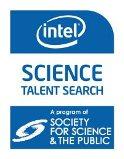STS finalists bound for Washington
Young researchers from 21 states have made it to the final stage of the 2013 Intel Science Talent Search, earning the chance to compete for a total of $630,000 in awards. The finalists were chosen from more than 1,700 entries. “This year’s ... finalists are presenting a wide range of research, from optimizing algae oil for biofuel to developing a new treatment for blood cancer,” says Wendy Hawkins, executive director of the Intel Foundation. “It’s exciting for the future of innovation because the U.S. needs these 40 high school seniors, and others like them, to question, explore and help solve some of the world’s greatest challenges.”
Last year’s top award went to Nithin Tumma of Fort Gratiot, Mich., who did research on a protein that helps cancer evade the body’s immune system. Also honored were Andrey Sushko of Richland, Wash., who created a tiny motor just 7 millimeters across that draws its power from the surface tension of water, and Mimi Yen of New York City, who studied genetic influences on mating behavior in the worm Caenorhabditis elegans.
By Matt Crenson

